Spain has Madrid, France has Paris, and the United Kingdom has London. But do you know what Japan’s capital is? In this article, we will explain not only which city is the current capital of Japan but also which other cities have held that status throughout history. From ancient imperial capitals like Nara and Kyoto to the modern metropolis of Tokyo, we will take a journey through Japan’s main centers of power across the centuries. Get ready to discover the fascinating history of Japan’s capitals!
- The History of Japan’s Capitals
- How Did Tokyo Grow So Fast?
The History of Japan’s Capitals
Before Emperor Kanmu 桓武天皇 came to power, it was common for each new emperor to move his residence to a different city. As a result, Japan had many capitals over time, particularly in the Kansai region, which was home to the ancient Yamato state.
There were various reasons for these changes. When an emperor ascended the throne after the previous one’s death, the move was often driven by religious motives: in Shinto belief, death causes spiritual impurity, so the site needed purification. Additionally, if the deceased’s spirit didn’t find peace, it could return as a yurei 幽霊 (ghost) to settle unfinished matters. Other influencing factors included dynastic disputes, succession struggles, and administrative or structural reforms in the country.
Yamato: Consolidation of Japan as a State and the Rise of its First Capitals
The consolidation of Japan as a state is an unresolved debate and subject of research. One popular theory is that during Japan’s prehistory during the prehistoric Jomon 縄文時代 and Yayoi 弥生時代 periods, the inhabitants of the Japanese islands organized themselves into uji 氏, Japanese clans and kin groups. Among them, the Yamato clan rose to power and eventually dominated the others. This centralized authority established itself in what is now Nara Prefecture, where cities like Asuka played a vital role in the early stages of the Japanese state.
Asuka: The Founding City of Japan’s First Capital
As Clémentine explains in her article, Asuka was highly significant between 593 and 710 AD, during what is now called the Asuka Period. It was the direct predecessor of Nara and marked a key transitional moment in Japanese history. During this time, Chinese influence was already evident in city planning, and important archaeological remains such as kofun (ancient burial mounds) still exist, including the famous Takamatsuzuka tomb. In Asuka, the oldest Japanese coins (wado) were discovered, and Japan’s oldest temple was built, signaling the rapid expansion of Buddhism.
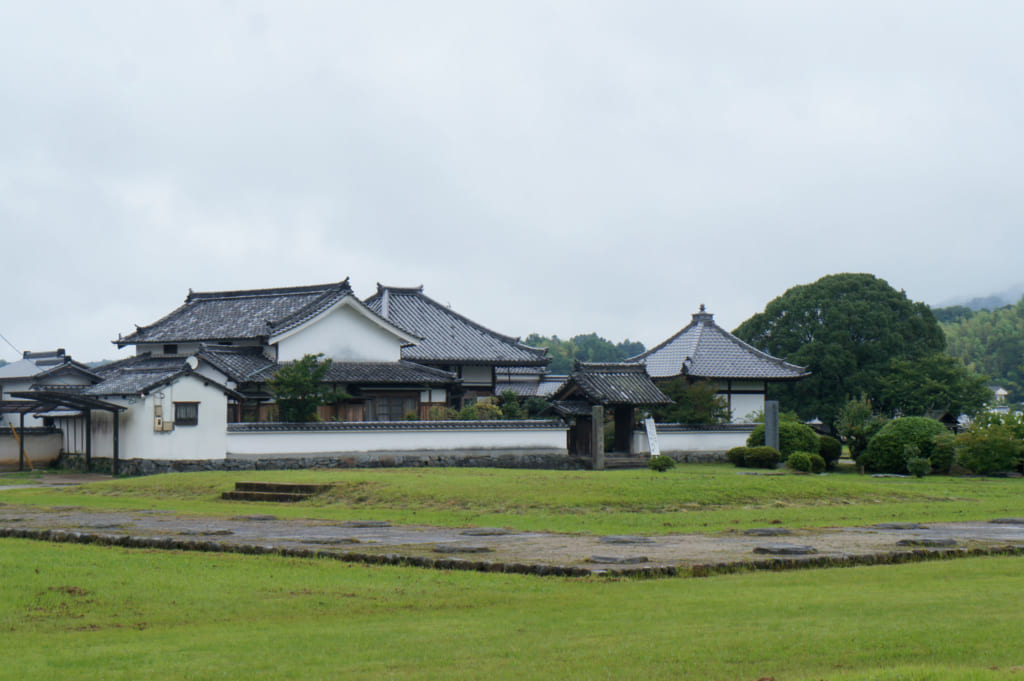
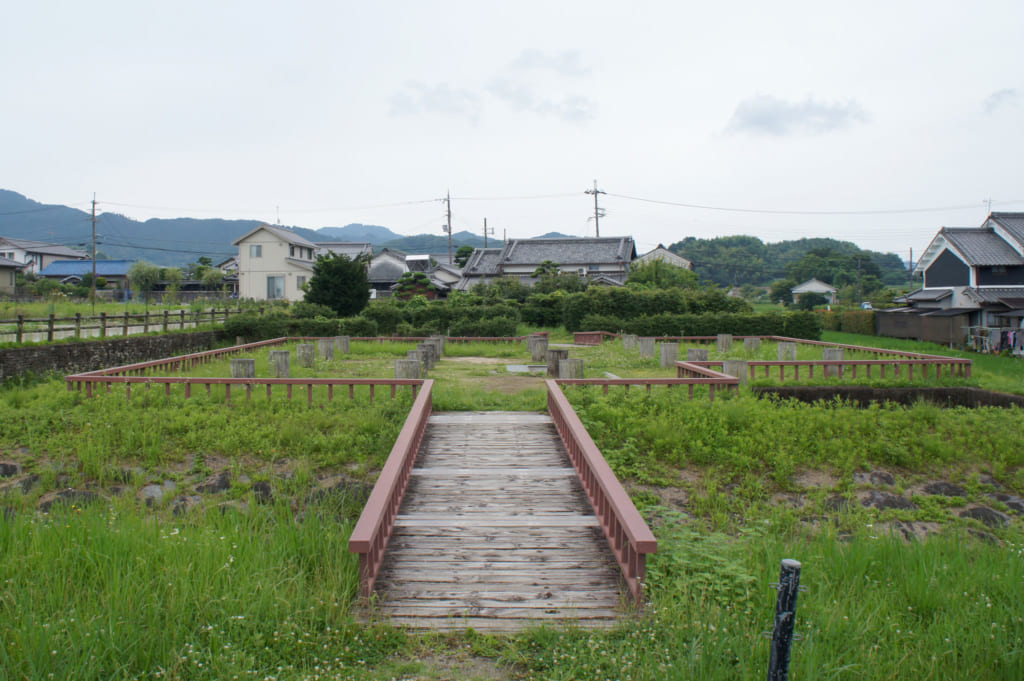
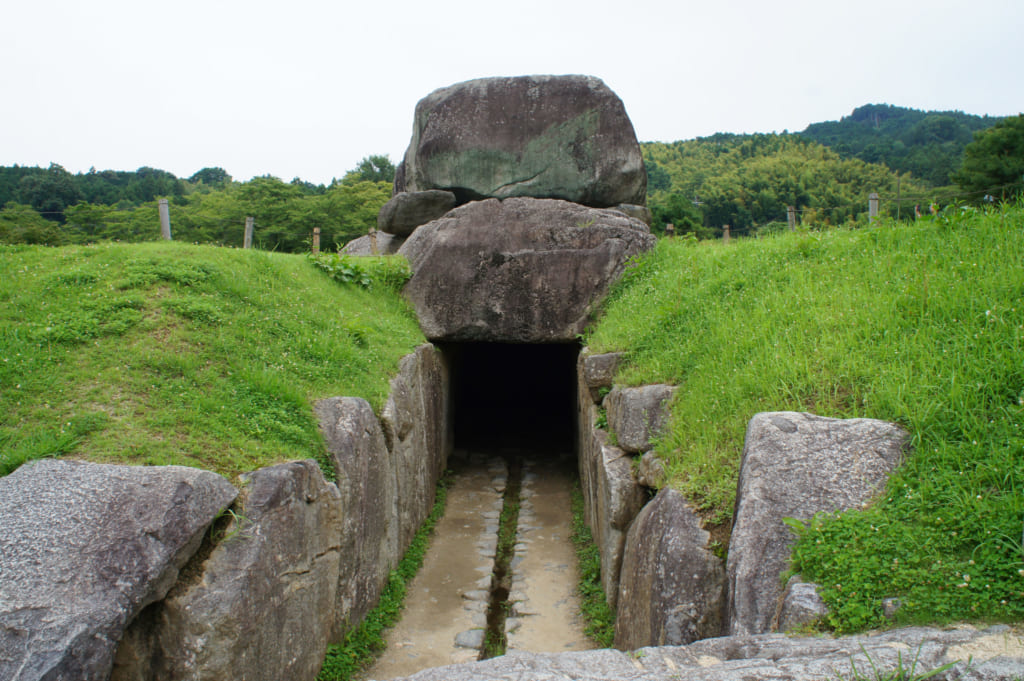
While for many historians, Nara is considered Japan’s first capital of Japan, the rise of the Yamato Province, and its newly-appointed court expansion have led others to believe that Asuka was the first capital of Japan. Debates aside, Asuka remains one of the most fascinating glimpses of Japan’s ancient civilization.
Nara: The Consolidation of the Court and Japanese Buddhism
With the founding of Nara, the Yamato state began to solidify as a centralized imperial court. New methods for naming emperors and governing the state emerged. While some historians argue that Nara wasn’t the first “official” capital, it’s widely regarded as the first major city where the imperial court established a lasting seat of power. Known at the time as Heijo-kyo 平城京, Nara was Japan’s capital from 710 to 794.
During the Nara period, significant reforms took place: the emperor’s authority grew, the ritsuryo 律令 legal codes were enacted, and Chinese-style Buddhism became the state religion. Heijo-kyo was designed following the layout of Chinese capitals, with four main avenues and the imperial palace oriented toward the North Star. By the late 8th century, the city had a population of around 200,000. Buddhism gained strong political influence, with emperors like Shomu championing the construction of major temples such as Todaiji.
 Tōdai-ji
Tōdai-ji
TOURIST ATTRACTION- 406-1 Zoshicho, Nara, 630-8587, Japan
- ★★★★☆
Nara’s era as capital ended with the ascension of Emperor Kanmu in 781 AD, who sought to distance the court from the growing influence of Buddhist temples. He moved the capital to Nagaoka-kyo 長岡京 in today’s Osaka. However, just ten years into construction, it was decided to relocate once again, this time to a mountain-surrounded plain believed to offer stability and protection.
Kyoto: The Longest-Running Capital of Japan
Several explanations justify the shift to the new capital of Kyoto, originally called Heian-kyo 平安京. It could have been the separation of Buddhism from the court. Or that Kyoto was located in a better location, more advantageous to maintain and gain control over the country. Another reason is that they were following the Chinese Onmyodo laws, which state that the imperial palace must be in a flat area. Some historians even argue that Kyoto was the first Japanese capital, and they consider the previous cities just important settlements for the Japanese Imperial court.
From its founding in 794 until the Meiji Restoration in 1868, Heian-kyo was the political, cultural, and spiritual heart of Japan. For over a thousand years, Kyoto remained the imperial capital and the country’s main power center. In fact, until the late 16th century, it was virtually the only major city in Japan.
The Evolution of Heian-kyo Through the Centuries
Over the years, this city had significant changes in its structure. In its early days, Kyoto was a court-centered imperial city, and it was distributed following the surrounding natural elements: the Kamo River in the east, Lake Ogura in the south, and Mount Funa to the north. Kyoto was also based on Chang’an’s Chinese city style, like Nara. The imperial palace was in the north, and its adjoining neighborhoods were divided into Ukyo (to the east) and Sakyo (to the west). Between them was a great avenue, Suzaku-oji.
During the Kamakura period (1185–1392), the new military government moved to Kamakura City, while the court remained in Kyoto. In addition to all the wars and natural disasters, this change caused Kyoto to undergo structural modifications, both architecturally and organizationally. The imperial capital of Japan became a medieval Japanese city, giving rise to the new powerful classes: the aristocracy, military, and religious institutions. During those centuries, they developed commerce and handicrafts, increasing their production and demand.
Imperial Capital vs. Military Capital
As we previously mentioned, during the Kamakura period, the Japanese capital was split in two. On one hand, there was the imperial capital in Kyoto, where the emperor and his court lived. But on the other hand, a new military capital was created in Kamakura, where the shogun lived.
Unlike the military government, which moved to various locations over the years, Kyoto remained the imperial capital until the Meiji Restoration. Kyoto preserves different architectural styles because it was not bombed during WWII. If you visit the city, you can observe the evolution of these styles for yourself.
Tokyo: The Current Japanese Capital
Tokyo’s story as Japan’s capital begins in the Edo period (1603–1868), when the Tokugawa shogunate established its military government in the city of Edo. At the time, cities like Edo and Osaka were growing rapidly, rivaling Kyoto in size and influence. With the arrival of the Meiji Restoration in 1868, the imperial court officially moved to Edo, uniting political and military power in a single city. The city was renamed Tokyo 東京, meaning “Eastern Capital,” symbolizing a new era for the country.
Initially, Kyoto and Osaka were considered for the new government seat, but limited space for new construction made Edo the more practical choice. Many existing buildings, such as Edo Castle, were repurposed. Edo Castle eventually became the Imperial Palace.
Today, Tokyo is not only Japan’s capital but also the largest city in the world, with over 14 million residents in its central area alone. Its transformation from a small settlement along the Sumida River into Japan’s political, economic, and cultural hub in just 200 years is astonishing.
How did Tokyo Grow so Fast?
The final question is: how did Tokyo, the new capital of Japan, grow so fast in less than 200 years? One of the key reasons Tokyo was chosen as the capital was its strategic location. Unlike Kyoto, Tokyo has direct access to the sea and lies near Yokohama, one of Japan’s busiest ports. This maritime connection was crucial to Japan’s modernization following its opening to the world during the Meiji era.
After over two centuries of isolation, Japan needed to modernize rapidly to compete with Western powers. Inspired by European and American models, the Meiji government launched a nationwide modernization effort — revamping infrastructure, creating new institutions, and transforming Tokyo into a modern, functional city.
Tokyo’s growth was also shaped by adversity. After the devastating 1923 Great Kanto Earthquake and the heavy bombings of WWII, much of the city had to be rebuilt. This led to the creation of more modern and functional neighborhoods, replacing the older, traditional layout.
In the postwar decades, Japan experienced a tremendous economic boom, often called the “Japanese Miracle.” Tokyo became the epicenter of this growth, attracting investment, workers, and industries. As a result, the city expanded not only in size but also in global influence, solidifying its status as one of the world’s leading capitals in the 21st century.
Tokyo symbolizes Japan’s drive for modernization and global leadership, while cities like Kyoto and Nara preserve the country’s traditional spirit. Exploring Japan’s ancient and modern capitals is one of the best ways to understand the rich and ever-evolving history of this fascinating nation. Whether you’re drawn to ancient temples or futuristic skyscrapers, Japan has the perfect city for every traveler.



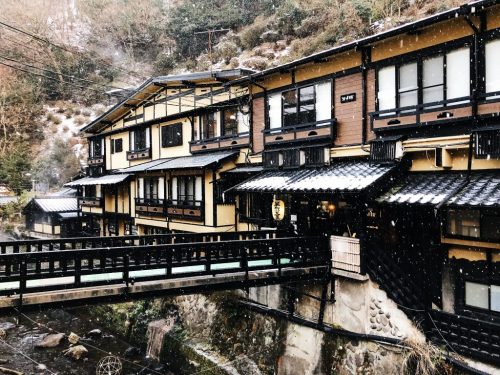
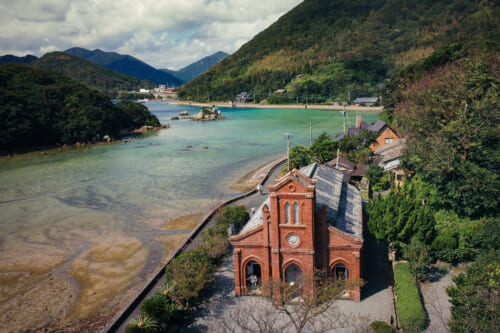
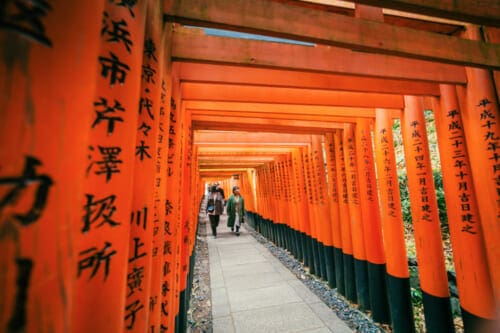


No Comments yet!